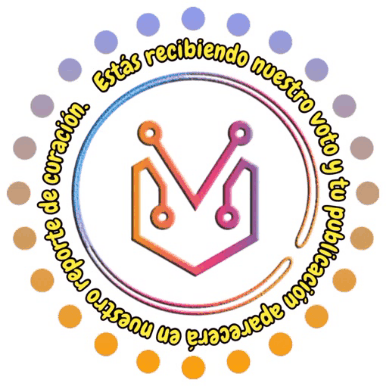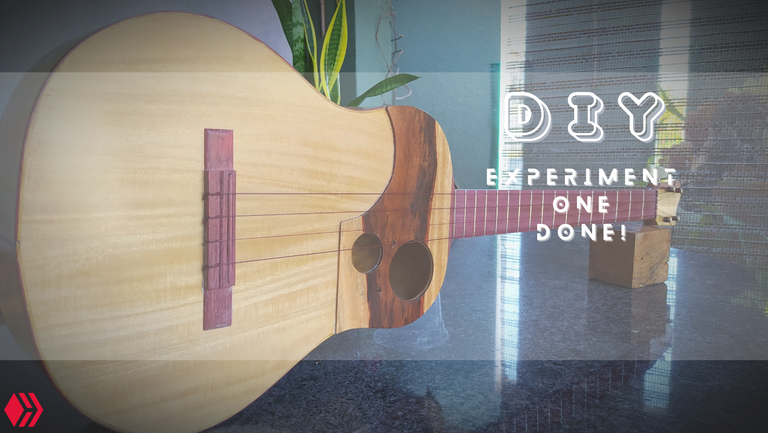

Resumen
Bienvenidos de vuelta a los miércoles de carpintería. En esta oportunidad, vengo a presentarles los detalles finales del último proyecto del 2022. Me refiero a este instrumento que tenía algo de tiempo estacionado en el taller.
Recap
Welcome back to Woodworking Wednesdays. In this entry, I want to show you the last bits of work on an instrument that spent quite some time in the workshop waiting to be done. I'mm referring to this instrument. It ended up being the last one of 2022.

Lijado
La última vez que vimos este cuatro venezolano, ya tenía el sellador. Ahora, faltaba lijar todas esas capas para emparejar la superficie. Este proceso es muy simple y solo requiere utilizar el tacto y la vista. Todo con el fin de no lijar de más y remover todo el sellador de la madera.
La capa de sellador pareja es necesaria para conseguir un buen acabado. Además, hay que tener cuidado removiendo el residuo del sellador. Un gran truco para hacer esto es pasar un trapo con un poco de thinner, pero tener cuidado de no hacer mucha presión o el sellador podría removerse.
Sanding
Last time we saw this one we were done with the sealant. Now, it was time to sand the layers to make them even. It is a simple task that requires a lot of eye and touch. This is because we don't want to remove all the layers and expose the wood again.
An even coat of sealant is key to having a great finish. We also need to remove any dust from the sanding. A quick trick to do this is using a cloth with some thinner, but don't press too much on the wood ñest
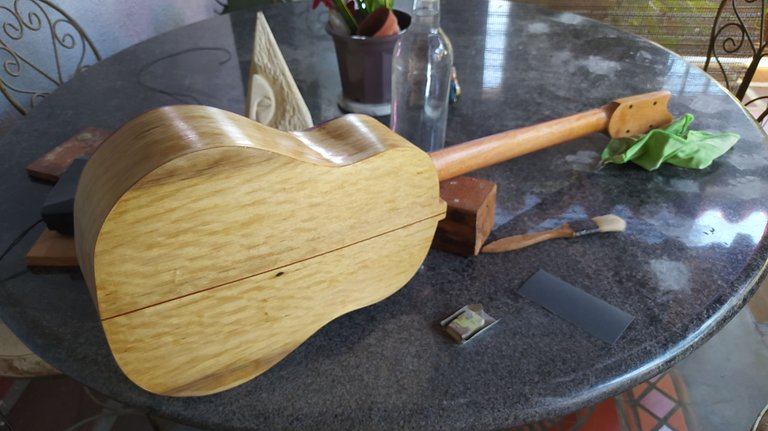
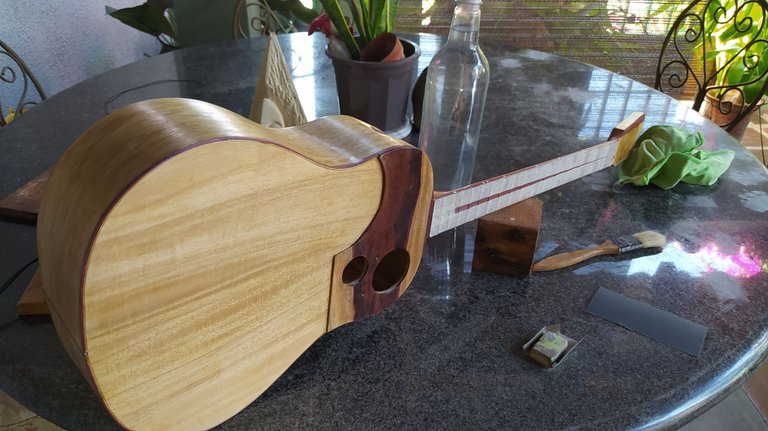

Puente y cejillas
Las últimas piezas en el instrumento van antes de las clavijas y cuerdas. Son las encargadas de mantener la tensión de las cuerdas sobre la tapa armónica y el diapasón. De ellas, el puente en la que requiere más trabajo. Las otras dos son las que determinan el largo de cuerda vibrante (tiro) del instrumento. Suena muy técnico pero solo se refiere a cuánta cuerda vibra. Lo que están hacia las clavijas no se mueve
En esta ocasión tuve algo de ayuda para hacer un puente muy bajo y una ranura cerrada para la cejilla. Fue un proceso muy largo pero valió la pena. Estéticamente se ve mucho mejor. Además, tube que hacer dos veces la cejilla superior porque en la primera oportunidad había una vibración muy fea que no permita que el instrumento sonara bien.
Hay que añadir aquí que pegar el puente es una dosis de adrenalina. Esto es porque hay que remover parte del acabado. Y hay que tener la posición y medidas correctas. No es algo que se pueda arreglar con facilidad.
Bridge, nut and saddle
The last three pieces that go before the tuning machines and strings. These are responsible for the action of the strings. They also limit the length of vibrating string. This means how much of the strings is going to move when played.
This time I had some help to make a very thin bridge. It also has a closed slot for the saddle. I must admit it has a more aesthetical appeal. However, it took a lot of time to have it ready. Also, I had to make the nut twice. The first time, there was a very annoying vibration coming form that piece and that didn't allow the instruments sound to shine.
Also, I gotta point out something. Preparing the are to glue the bridge gives you an adrenaline rush. You need to remove the finish from that area. So, you've got to have surgical precision lest you want to screw the finish on the sound board. It's not an activity for the faint of heart.
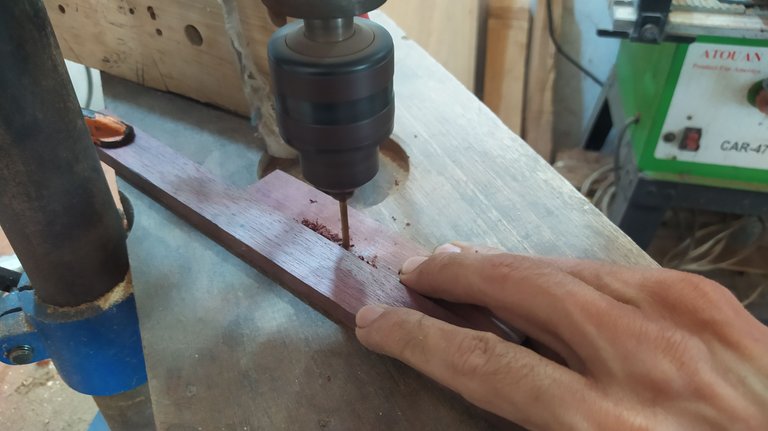 | 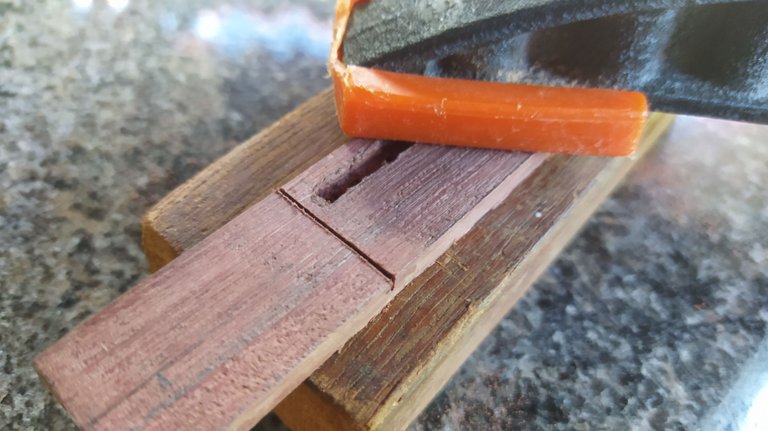 | 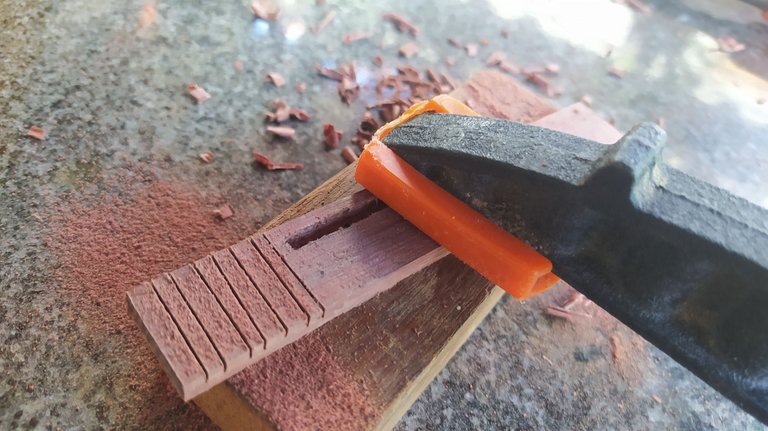 | 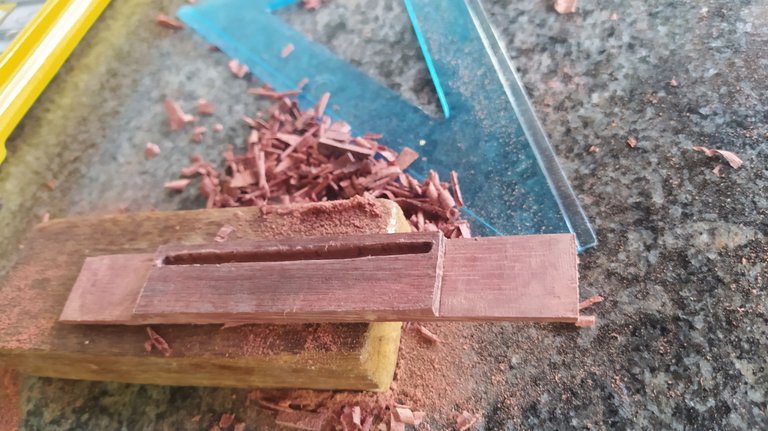 | 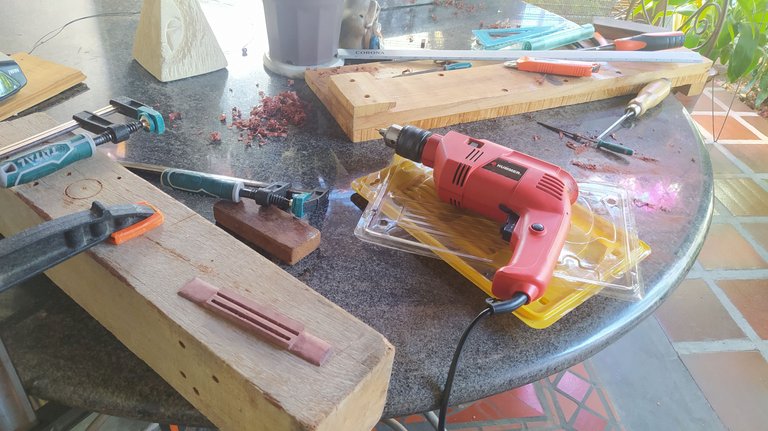 |
|---|
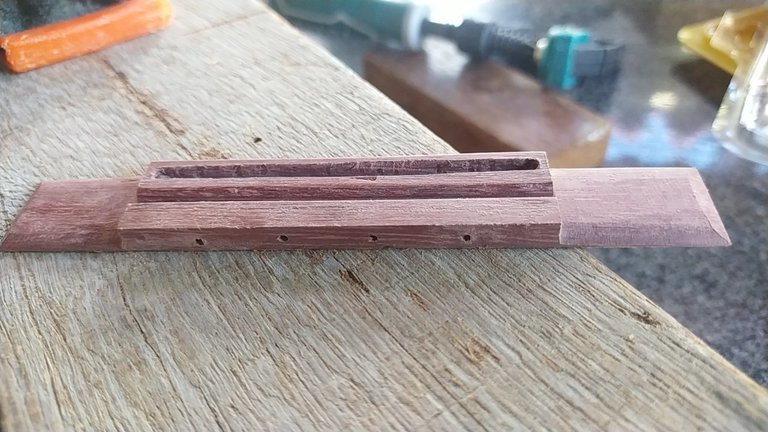 |  | 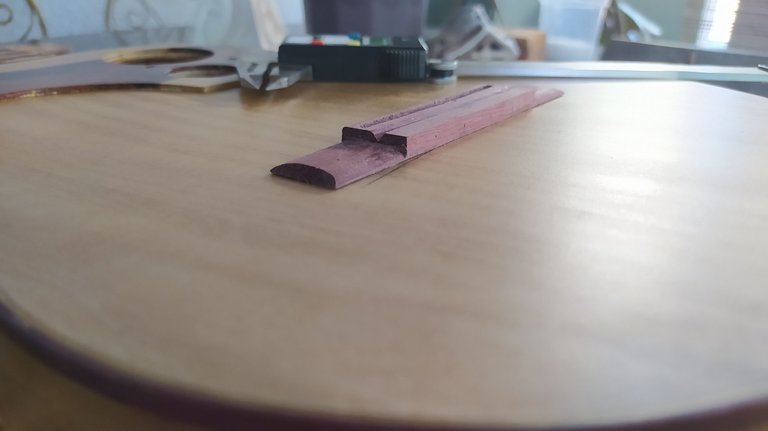 | 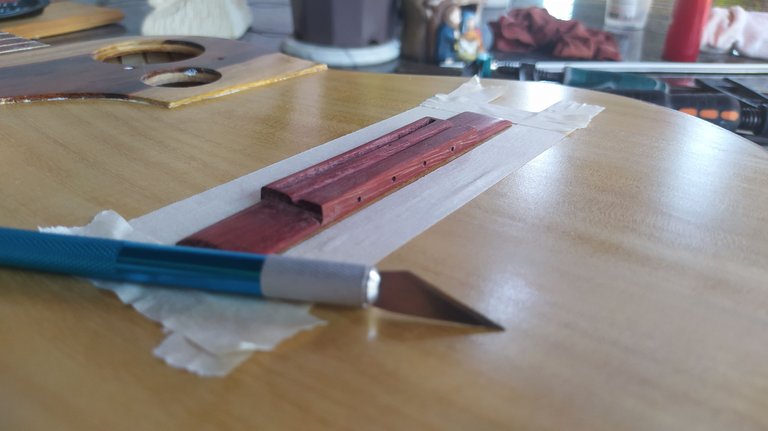 | 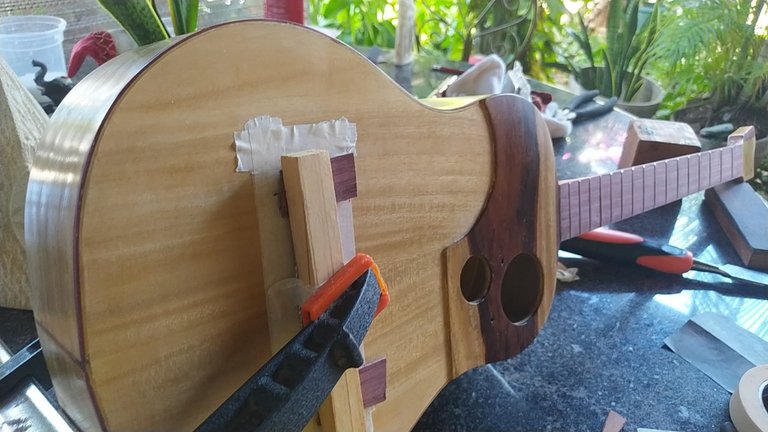 |
|---|
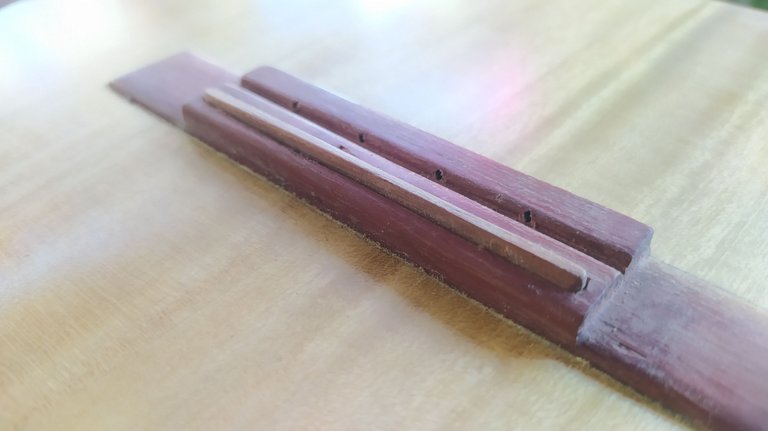 | 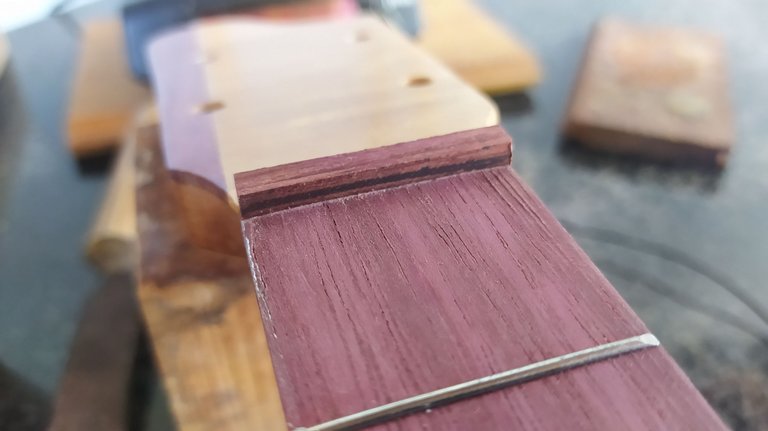 | 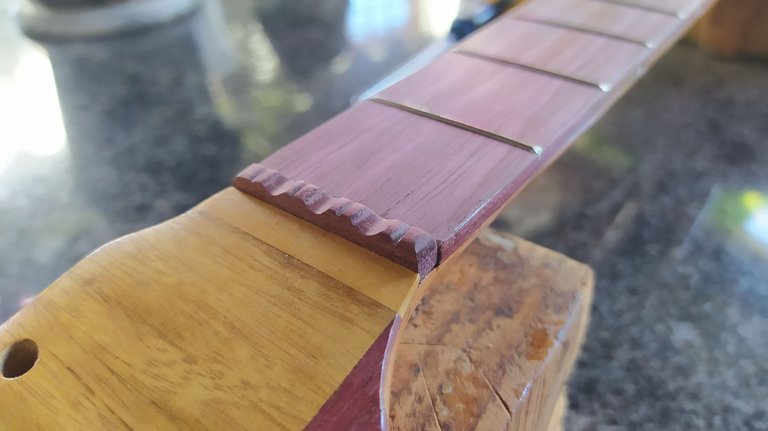 |
|---|

Clavijas y cuerdas
Siempre que se colocan estas, ya sabemos que el instrumento está casi listo. Con todo preparado, solo queda colocar los tornillos para fijas las clavijas y luego sacar las cuerdas del empaque para fijarlas en el puente y tensarlas en las clavijas. Todo para lograr llegar a la afinación. Al principio, el instrumento se va a desfinar mucho. Esto ocurre porque las cuerdas de nylon se estiran hasta llegar a un nivel de elasticidad adecuado para mantener la afinación.
En esta ocasión, estoy usando las cuerdas Aquila "Red Series". No sabía que las cuerdas también eran rojas. Sin embargo, están en la identidad de color del instrumento. Así que le van bien. Además de eso, tiene un sonido muy claro y brillante.
Al colocar las cuerdas tenemos qieydar un tiempo para hacer otros ajustes menores que sean necesarios. Pero con esto podemos dar el proyecto por finalizado.
Tuning machines and strings
We know the project is coming to an end once we start with this part. There's nothing to it. We just need to screw the tuning machines in place. Then, tie the knot for the strings on the bridge, get them over the tuning machines and start turning. These are going to go out of tune quickly on this stage. Nylon strings take some time to adjust to the tension. It will get better over time.
I'm using Aquila's "Red Series" strings. It surprised me that they are red. But it goes well with the whole colour identity of the instrument. They also pack a very bright and crisp sound.
After getting the stings, there may arise the need to make some other adjustments, but we can call it a day and say this project is finally finished!
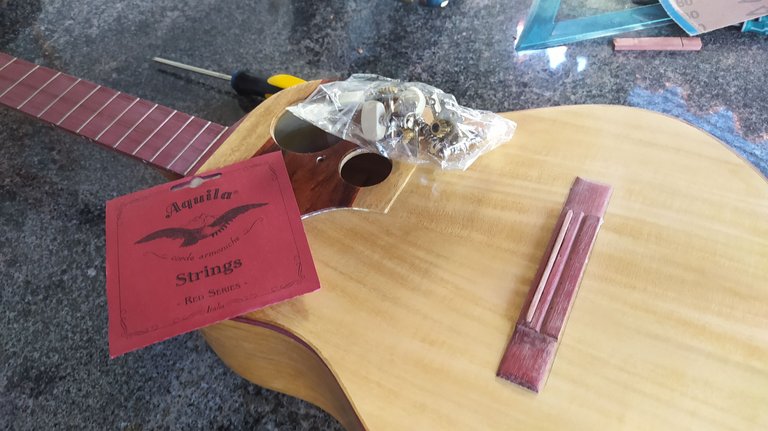
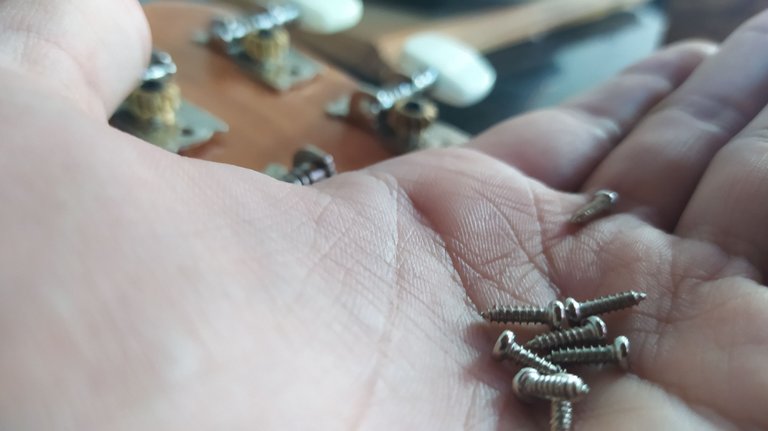
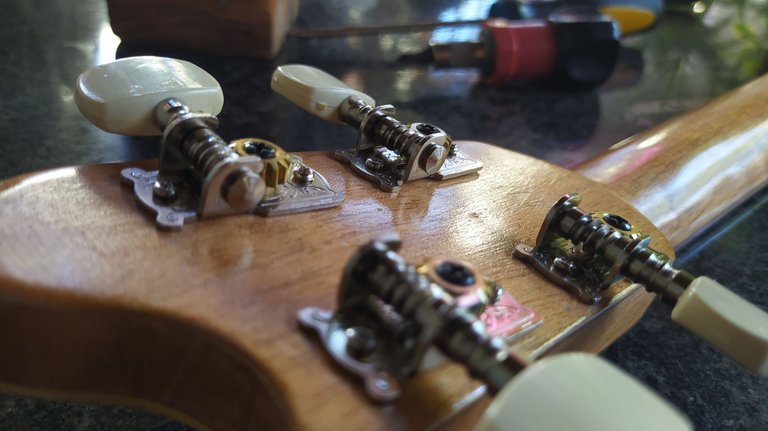
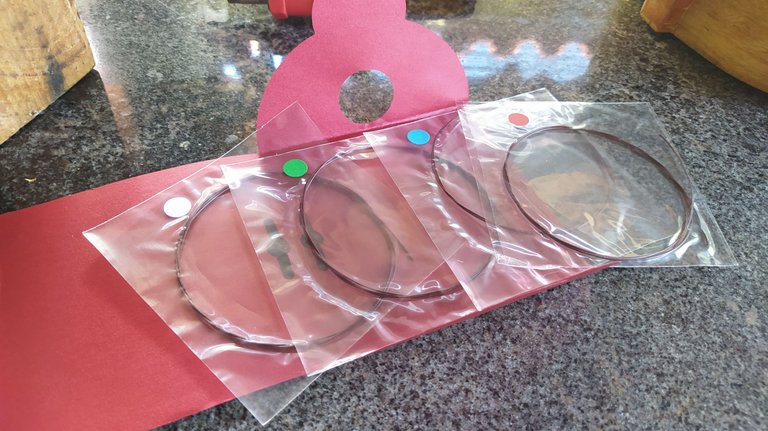
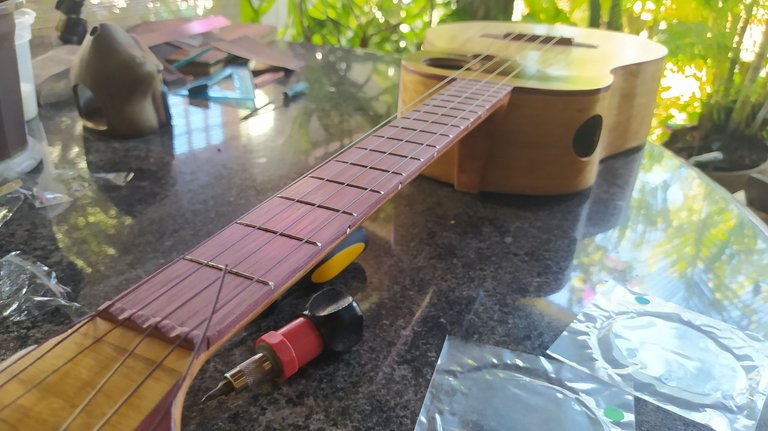

Últimas palabras
Este ha sido el proyecto más interesante que he completado hasta ahora. Tiene una estética diferente a los cuatros venezolanos tradicionales. Todavia seguimos en la búsqueda de la estética. La prueba de sonido vendrá pronto. Por los momentos, me despido, pero dejo abierta la sección de comentarios para sus dudas o cualquier pregunta.
¡Manténgase creativos y que tengan buen día!
Wrap up
This has been one of the most interesting projects I have finished. The aesthetics differ a lot from Traditional Venezuelan Cuatros. I'm still looking for my aesthetics. The sound test will come soon. I'm out for the day, but the comment section is open for your questions and anything you want to say.
Stay creative and have a great day!

- Fotos/Photos 📷: taken by me (Redmi Note 8)
- Portada/Thumbnail 🖼️: created by me with Canva.

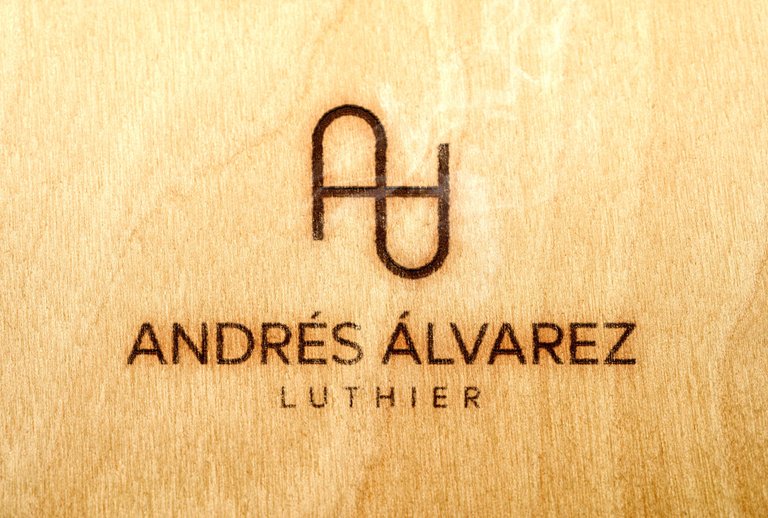
Follow me on Instagram for enquires and commission.
If you'd like to help the workshop grow, you can make a donation here. You can find me at discord as bertrayo#1763
